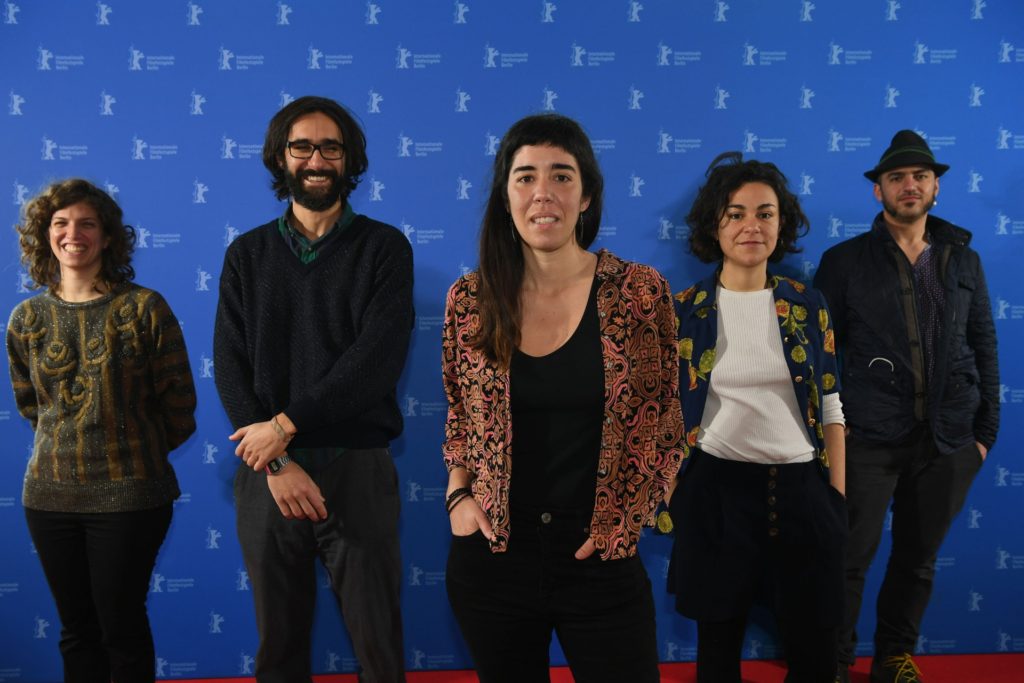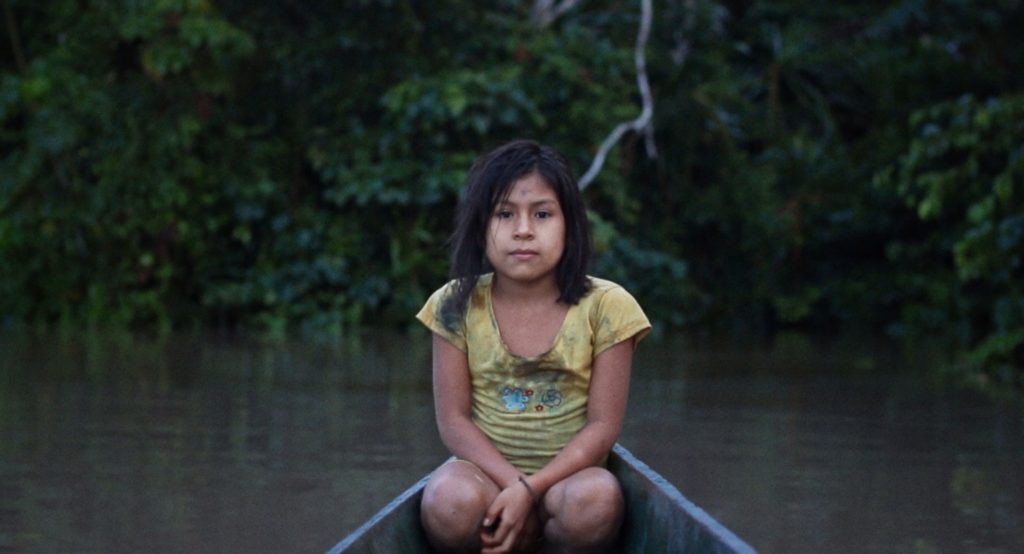Ines Alves: “I wasn’t really after making a film”

Inês T. Alves’ debut feature film Waters of Pastaza was born by pure chance. When she moved to Suwa, an isolated community of about 80 inhabitants in the Ecuadorian Amazon Rainforest to participate in the project with local children, giving them film workshops, she realized that she was experiencing something inspiring. In front of her eyes kids were living their childhood completely free, in harmony with the nature and curious about everything around them. She decided to use the camera (not a good one as she would explain us later) and film what she saw.
Waters of Pastaza screens at the Berlinale in the Generation program, and we were lucky to meet the director and speak to her about the beautiful result of her observations.
The fírst spontaneous question is your motive for this film.
Many years ago I started working for an association in Portugal that organizes film workshops for kids, which is also how I got close to the filmmaking. I never studied film before, and although I had some notions about it, I began learning together with the kid swhile I was assisting those who were giving workshops. I was very interested in childrens’ reaction to films, and I couldn’t help but thinking about the childhood. The thing is, there were workshops for children of all ages, and I noticed the difference in their perception according to the age. Some things they had in common: creativity, curiosity and being open to new things. I noticed that the 12 year-olds were already starting to react in a completely different way, using terms like ‘boring’ so I began to ask myself how and when we start transforming, losing spontaneity.
In our society, as adults we don’t use those qualities mentioned above. Again, it was more impressive to observe how the kids I met in Ecuador were completely free, and yet very responsible for what they had to do at the same time enjoying what they were doing. Don’t get me wrong, the place I went to is not some kind of paradise for kids, but I was nevertheless inspired by them.
How did you come across that particular community?
I went to study documentary filmmaking in London, and after that, I really wanted to leave the concrete jungle behind me and get out of Europe and out of the West. I was quite interested in the Amazon regions for many reasons for a while, so I started surfing on the internet looking for projects that would give me the possibility to be in one place and in one community, and to be involved in something. I wasn’t really interested in travelling around. I discovered a couple who initiated a project that involved collaborations with local teachers in Ecuador, so they were open for receiving people from the outside. I was intrigued to go there and exchange knowledge with them. Since I already did workshop with kids, at that time I thought that I could share that experience and see what happens. I didn’t want to be in that school per se, but I still thought that making workshops with children would be great. I wanted to shoot something but I wasn’ t really after making a film which is why I took only the basic equipment with me.

So, the film was a one-woman-project.
Yes, I was totally on my own. I’ve spent a lot of time with kids outside of school. We began playing with the camera and with the cellphones they had. It was something new for them, because they got the electricity only two months before we arrived.
Is the project still running?
Unfortunately not. There were some problems with the local teacher and then Covid-19 came. They forbid people to come from the outside to protect the community.
How long did you stay in Suwa?
Only two months. That sounds short for making a film, but I was able to be fast because I’ve spent all that time with the kids. I didn’t have anything else to do. I stayed close to them. Their school was at the main square of the community, and I lived next to it, in a little house that was prepared for me.
So, I had more time than enough to shoot the material. The problem was that I just had a microphone that was connected to the camera. I was really sad that I couldn’t do the proper sound recording, but as I didn’t know how long I was going to stay there I didn’t want to bring too much with me out of fear that the equipment would be damaged through humidity or rain. That is why I also didn’t buy anything beforehand
So, I guess that the post-production was very long.
Yes, I had a team that had to do a lot of work in the sound department.
Regarding your experience, what was the most surprising thing you encountered?
there were many surprising things but one of them was for sure how those kids live and how they are at one hand very independent, and on the other very collaborative. I was surprised how resourceful they were with the things they found in the forest. It was also interesting to observe how the adults have a set of rules regarding what women and men do, but among children there wasn’t a division between girls and boys. They all row the boats and cook together.
How did you communicate?
They have their own language – Achuar, so the adults communicate in their mother tongue. But it’s interesting that they speak Spanish to their kids which is why we could talk. On the other hand, since the parents don’t speak Spanish that well, the children don’t have so much vocabulary to express themselves. At times it was difficult, but we spoke Spanish to each other.
When did the shooting take place?
In 2018. It took a long time to finalize the film because it was difficult to get the money for the post-production.
Were there any difficulties that you encountered during the shooting?
Yes, but they were all connected to my bad equipment. i had only one hard drive which broke, and I actually wasn’t sure if I lost the images. Fortunately I could recover them. So, I didn’t have a hard drive and no storage space and I had to upload them on the computer with a limited space. I was putting all things there hoping that nothing will happen to the computer, and every time I had to delete some images because I didn’t have space for my material, it was a bit difficult. Since I was at the end really working on a documentary, there would often happen that I would need to upload material and only then decide if I needed it. At the same time, there was something good about it. Since I was aware of the limited space to save the data, I was more careful with what I was shooting. I had to rely on my intuition.
I also took with me a small projector and I did a lot of film projections at night for the whole community, but also for the kids in their school. That, for instance, was a part of our workshop. We spoke about films and about making films. Sometimes we would make some small excercises, sometimes a bit of stop-motion.
Did the children understand what they were a part of from the beginning?
At the beginning they were filming with my camera and with their cell phones. They knew what the films were and they watched them before, because even if they didn’t have electricity, they had a generator and they had ocasional screenings.
What is your wish for this film?
I feel that this film is allowing the kids to communicate with the world at least this is what I hope, and I am trying to bring the inspiration I found there to the world. I hope that we can understand better that in the Amazon are those people’s territories that need to be protected and respected. We must become more aware what we are doing by destroying the nature.
















